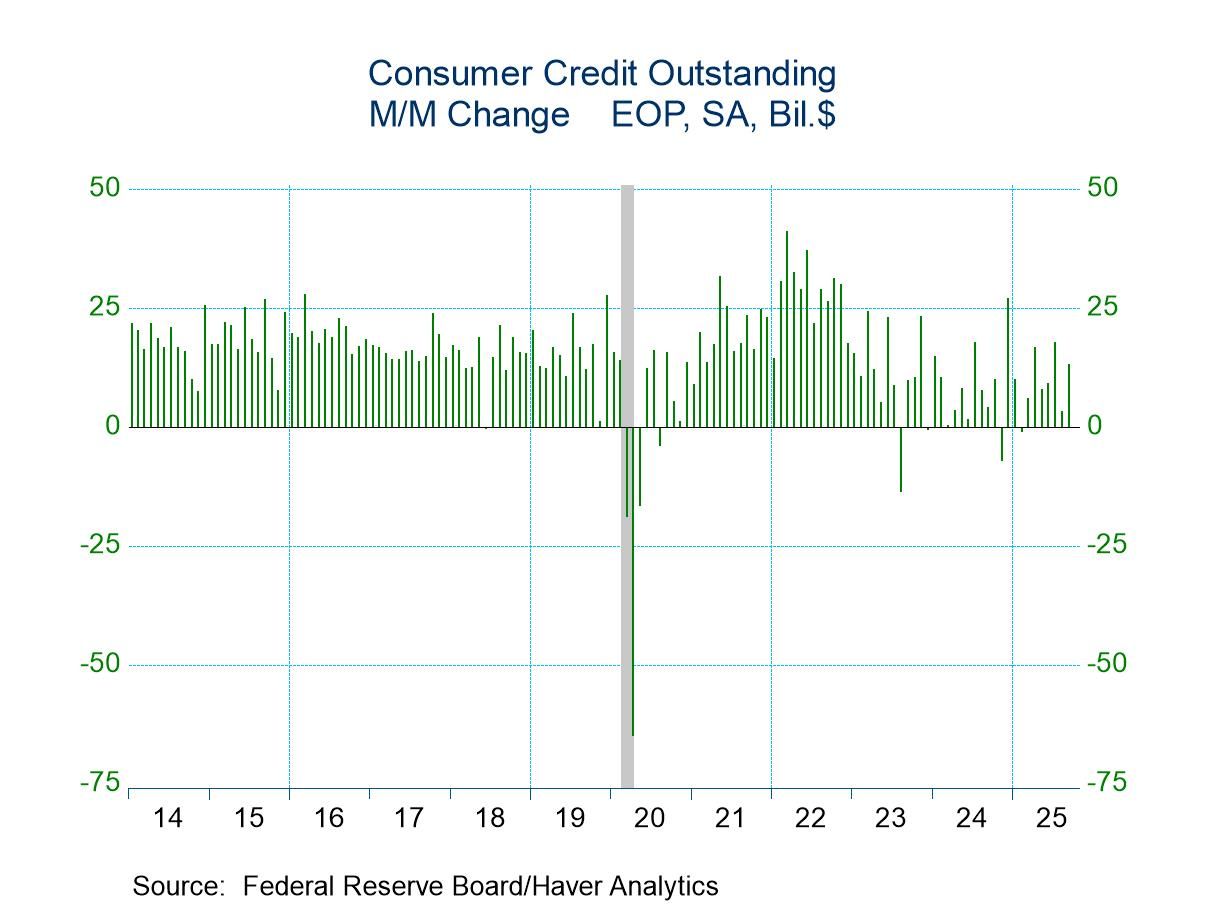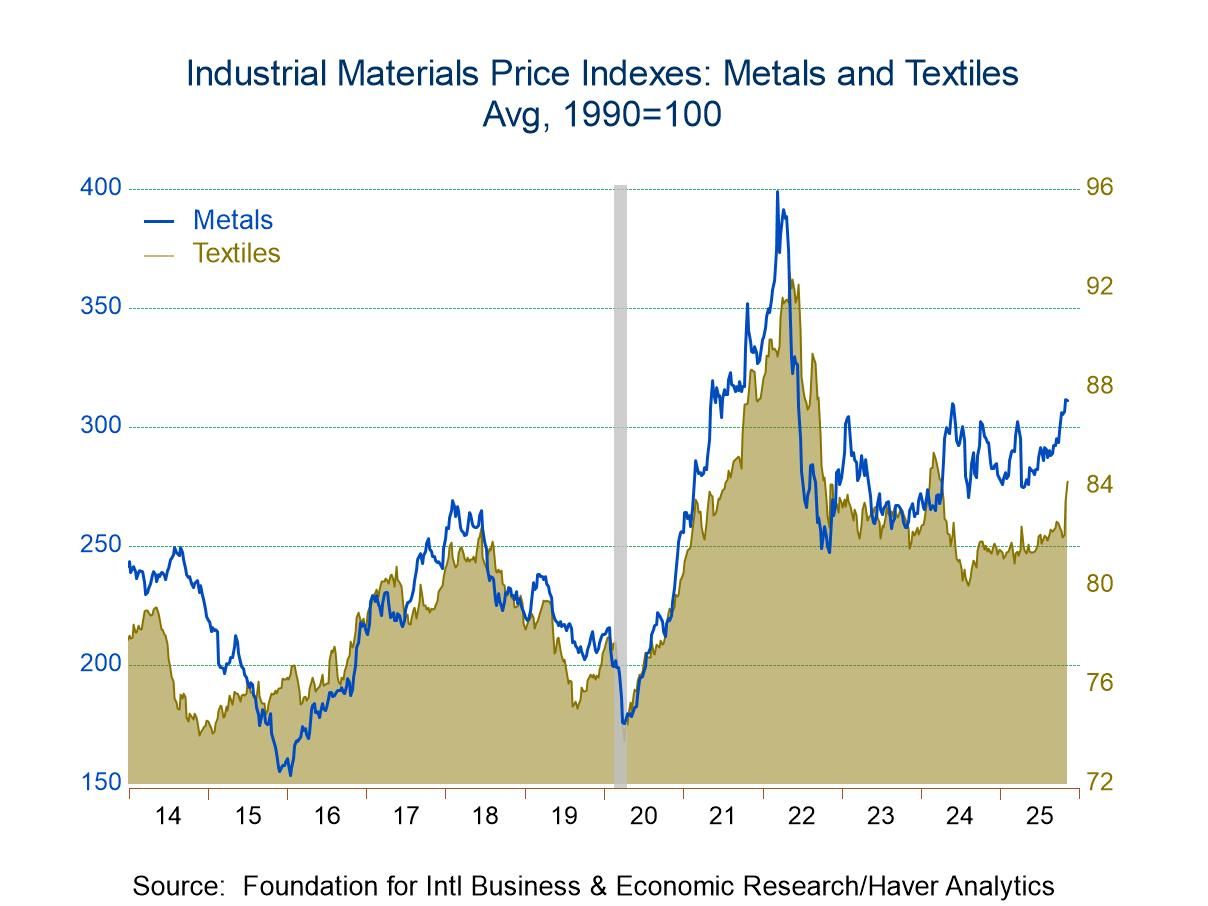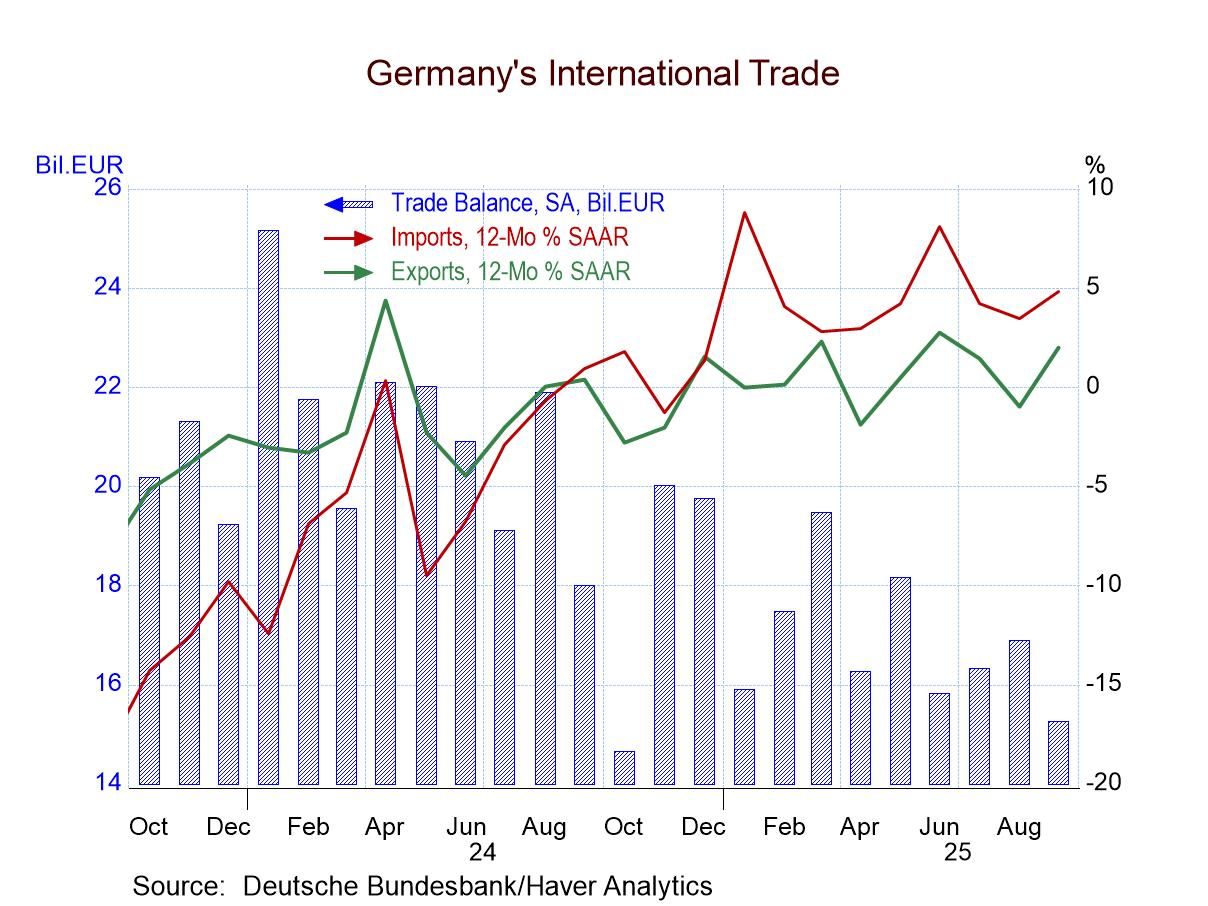French IP Bounced Back and Is on the Road to Repair

French IP is up by only 0.1% over 12 months, a rather disappointing result. However, the graph shows that the PMI value for France has been extremely high. The PMI boomed as IP itself rose year-over-year by nearly 50%! But then as IP cooled and as year-on-year growth withered to a negative result, the manufacturing PMI gave back some ground but continued with readings above 50 showing ongoing expansion. In the last several months as year-on-year IP has floundered, the MFG PMI has strengthened. Maybe the message from the manufacturing PMI is that manufacturing is stirring again despite its year-on-year weakness.
That notion is corroborated by the sequential growth rates for manufacturing IP. The tiny 0.1% 12-month gain in growth gives way to a pace of 2.6% over six months and to a further step up to a pace of 3.4% over three months. The production process is still less than smooth as August IP rose by 1%, September IP fell by 1.6%, and October IP was up by 0.9%. But those are the relevant of economic data, with weather, Covid and supply issues combined with transportations problems all mixing-together to play a role in the output process.
In terms of driving the steady progression of output higher, the backbone of that effort is from capital goods where output falls by 1% over 12 months then advances at a 1.7% pace over six months then accelerates to a 3% pace over three months.
Intermediate goods show roughly steady growth with 12-month and three-month growth both at 1.4% with a weakening over six months.
Consumer goods shows the output of consumer durables working irregularly to higher growth rates with growth over 12 months of 4.1% then accelerating sharply over six months to 8.3% and settling to a lower growth rate of 5.8% over three months, a pace that is still higher than its 12-month pace. Consumer nondurable goods output is flat over 12 months; it rises to a pace of 5.6% over six months then slips and contracts at a 1.8% pace over three months.
One interesting trend is that even with the ongoing chip shortage, the output of automobiles in France has been steadily improving from a decline of 29.9% over 12 months to a decline at a 19% pace over six months to an advance at a 2.1% pace over three months.
The overall French trends are clear; but they are not fully supported by all the component sectors. And in the quarter-to-date, we see that unevenness at work again. Early in Q4 (October) aggregate output is rising by only a 1% annualized rate. Consumer durable goods output is up at a 3.1% annual rate, consumer nondurable goods are falling at a 2.7% annual rate while capital goods output continues to perform and expand at a 3.3% annual rate. Intermediate goods output continues to cruise along posting a 1.7% growth pace. However, in the new quarter, auto output is falling at a 29.1% annual rate. Now these are only quarter-to-date trends and since it is early in the quarter, they still can change a lot.
As always, the trends are subject to outside influence either from supply disruptions or Covid issues. The Omicron variant is the newest worry and thus far we know little about it. It’s a risk and that may mean a large one or a small one.
Robert Brusca
AuthorMore in Author Profile »Robert A. Brusca is Chief Economist of Fact and Opinion Economics, a consulting firm he founded in Manhattan. He has been an economist on Wall Street for over 25 years. He has visited central banking and large institutional clients in over 30 countries in his career as an economist. Mr. Brusca was a Divisional Research Chief at the Federal Reserve Bank of NY (Chief of the International Financial markets Division), a Fed Watcher at Irving Trust and Chief Economist at Nikko Securities International. He is widely quoted and appears in various media. Mr. Brusca holds an MA and Ph.D. in economics from Michigan State University and a BA in Economics from the University of Michigan. His research pursues his strong interests in non aligned policy economics as well as international economics. FAO Economics’ research targets investors to assist them in making better investment decisions in stocks, bonds and in a variety of international assets. The company does not manage money and has no conflicts in giving economic advice.







 Global
Global